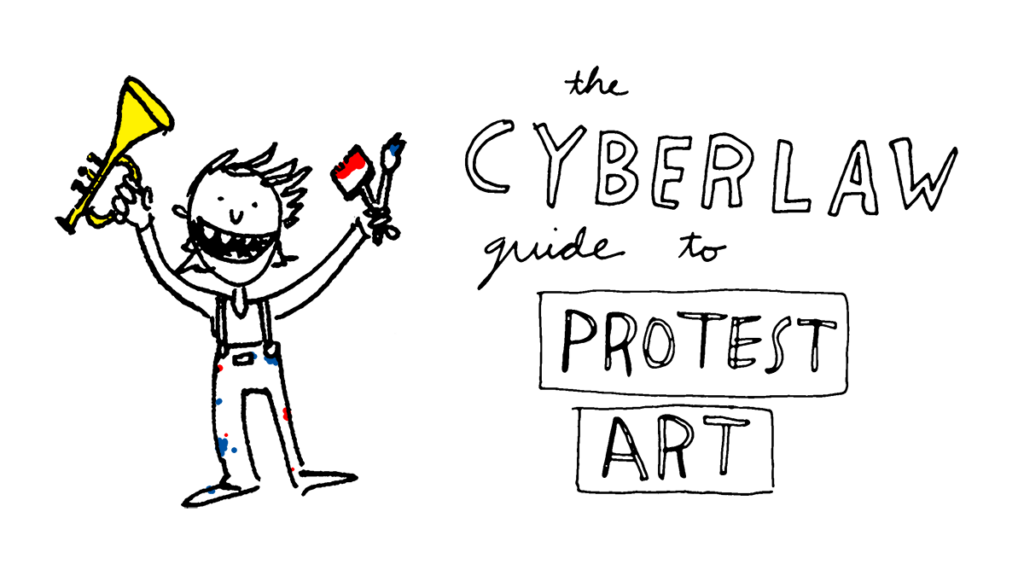The Cyberlaw Guide to Protest Art
Blog – Cyberlaw Clinic 2018-01-22
In the wake of Trump’s election and the resurgence of political art inspired by movements like the Women’s March, the Cyberlaw Clinic was approached by artists seeking clarification of their rights and responsibilities as creators and activists online. In response, a team of Berkman Klein staff, Clinic students, and allied creative folks created this Guide. It’s in plain language, meant to be accessible and helpful for folks across the political spectrum who are using art to engage in civic dialogue, to minimize their risks and maximize their impact.
We took on this project because art plays a significant role in American democracy. Across the political spectrum, protest art — posters, songs, poems, memes, and more —inspires us, gives us a sense of community, and provides insight into how others think and feel about important and often controversial issues.
While protest art has been part of our culture for a very long time, the Internet and social media have changed the available media and the visibility of protest artists. Digital technologies make it easy to find existing works and incorporate them into your own, and art that goes viral online spreads faster than was ever possible in the analog world. Many artists find the law that governs all of this unclear in the physical world, and even murkier online.
The authors have seen how the law can undermine artists, writers, and musicians when they’re caught unaware, and distract them from the work they want to do. But we’ve also observed how savvy creators use the law to enhance their work and broaden their audiences. This guide is intended to ensure that you, the reader, can be one of the savvy ones.
In this guide, we will cover the main areas of law that are implicated by protest art online, with separate posts on:
- Roadmap: what the Guide covers and to whom it will be helpful
- Copyright Part 1: what copyright protects (and what it doesn’t) and how to deal with copyrighted works
- Copyright Part 2: the law of fair use — what it is, how it’s determined, and the risks of fair use
- Copyright Part 3: getting permission to use the work of others — how to identify a copyright owner and how to make a license request
- Trademark: what trademark protects, and when you can use another person’s trademark (with or without their permission)
- Rights of privacy and publicity: legal rights of privacy and publicity, which are implicated when protest art features real people
- Sharing and merchandising your work: licensing your work including with Creative Commons, using disclaimers, and making money
We’ll give you the background on what the law is and explain why it works the way it does. Finally, we’ll give you practical advice on how to get your work out onto the web and into the world.
The Cyberlaw Guide to Protest Art was written by Cyberlaw Clinic staff and students including Jessica Fjeld, Hannah Hilligoss, Maggie Finnegan (Fall ‘17), Jose Lamarque (Spring ‘17), and Jackie Kim (Spring ’17) in collaboration with Jessica Yurkofsky and Sarah Newman from metaLAB at Harvard. The illustrations were all created by Yurkofsky. We are grateful for the assistance of our Editorial Board including Hayley Gilmore, Carolyn Marsden, Crystal Nwaneri, and the Arts & Business Council of Greater Boston’s Megan Low, as well as the input of Berkman Klein Center collaborators Christopher Bavitz and Nikki Bourassa.

